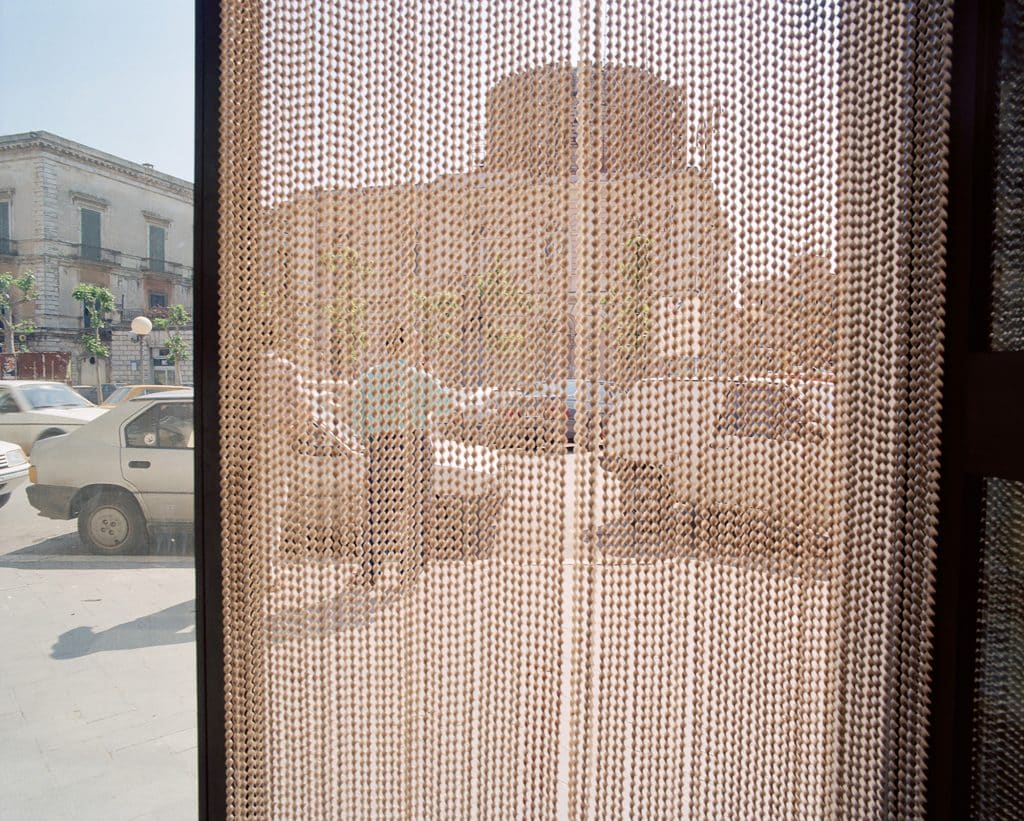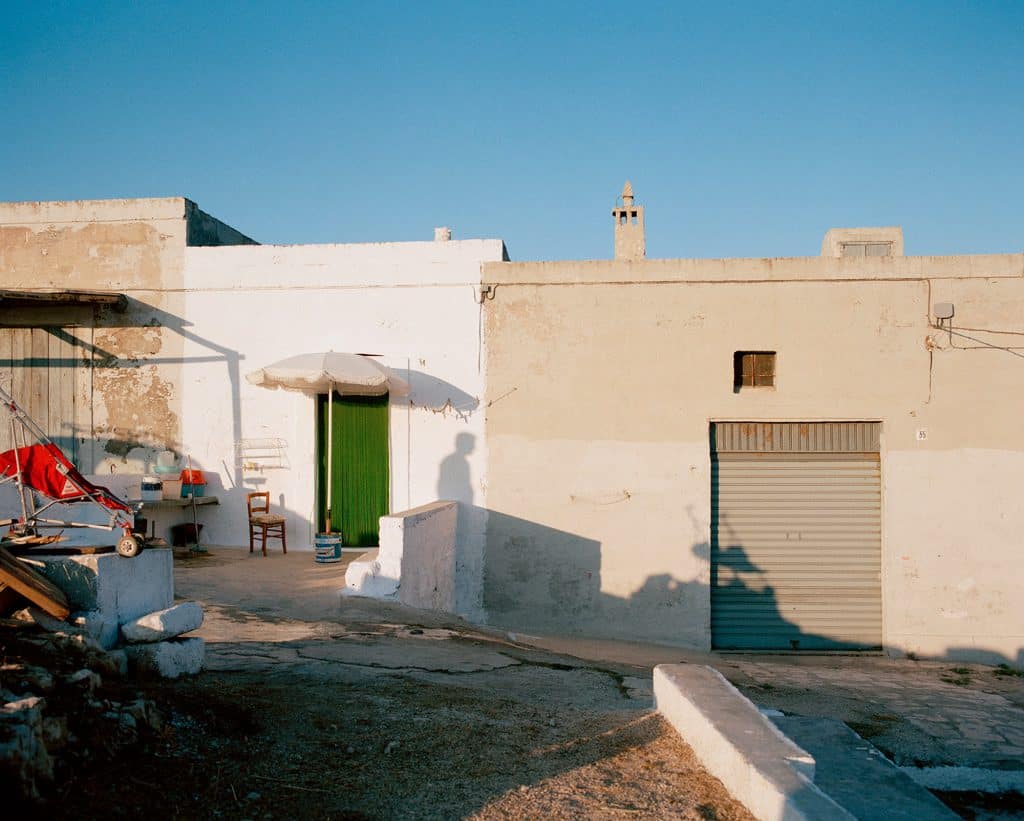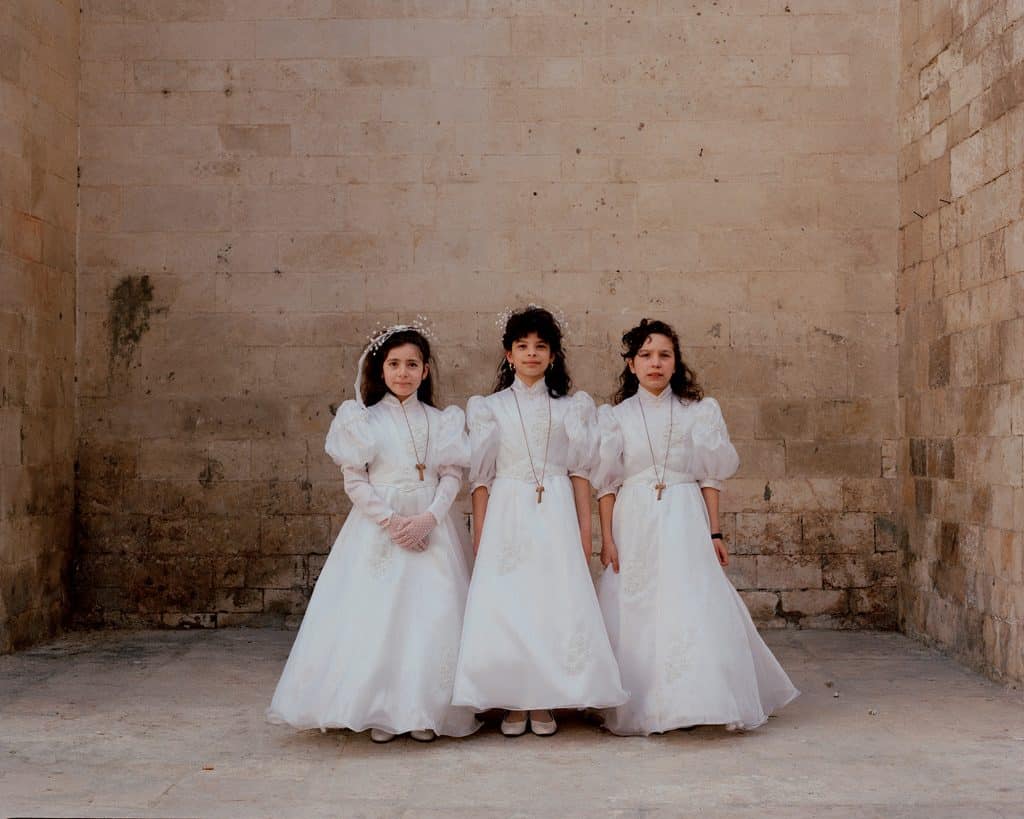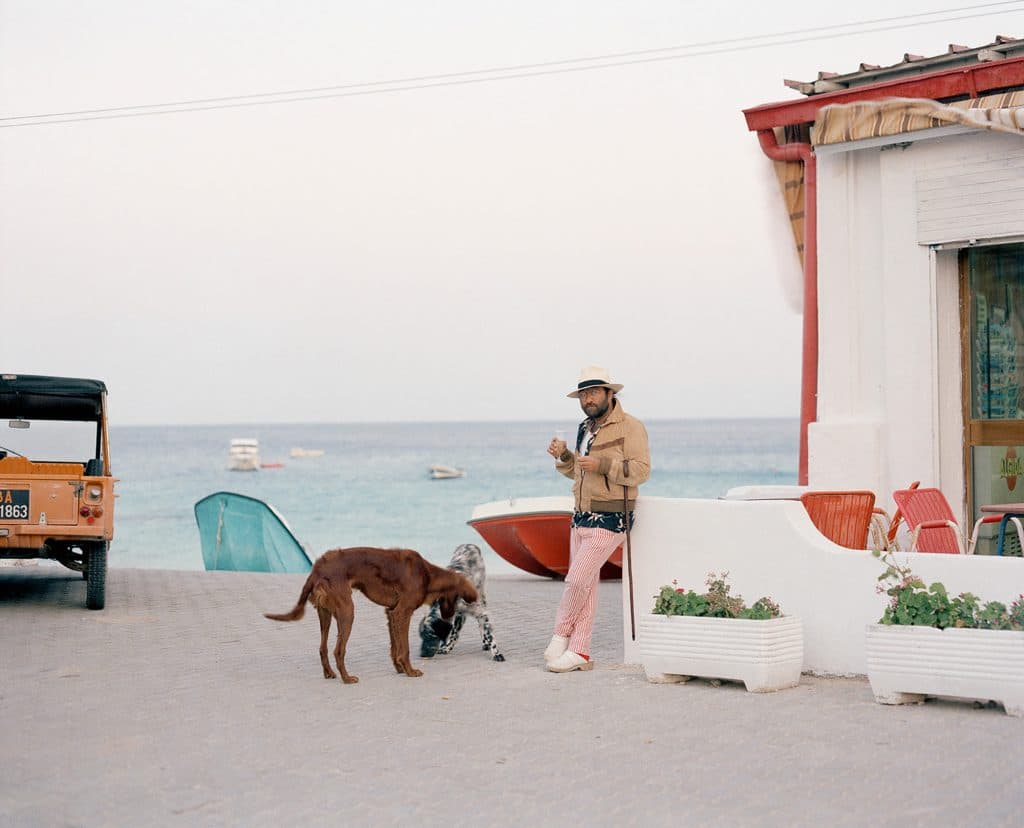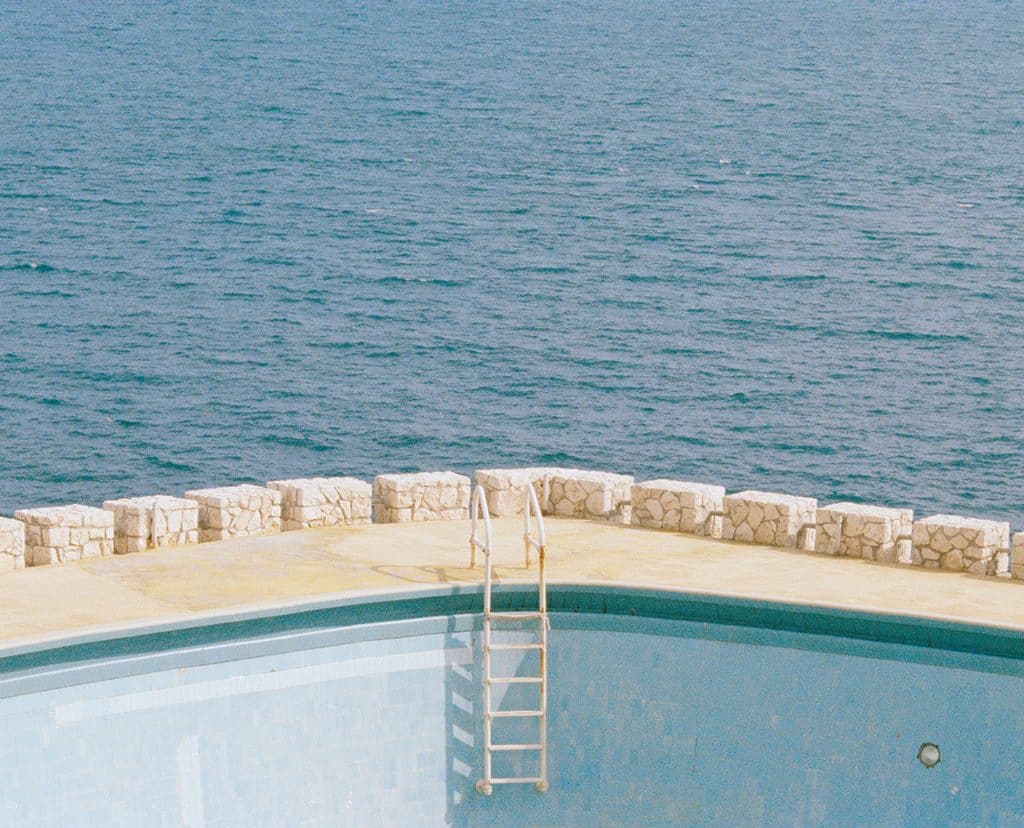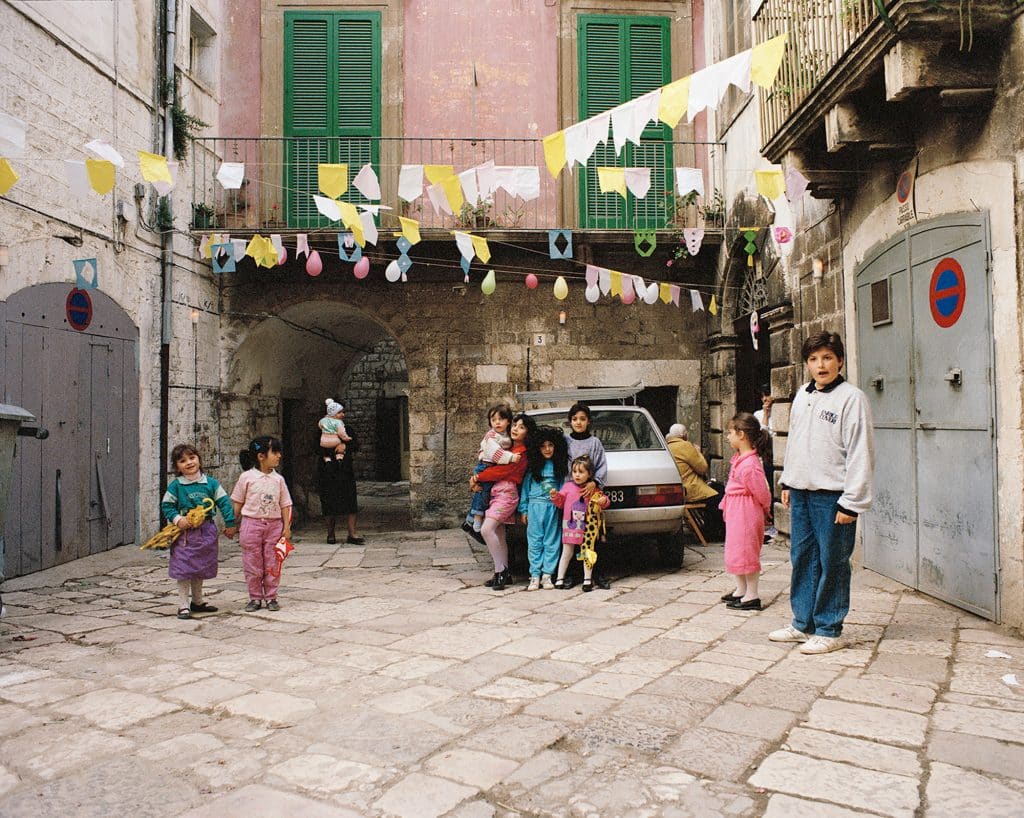
To understand the work of Luigi Ghirri, you must reread the book Luigi Ghirri, l’amico infinito by his friend, publisher and photographer Claude Nori, who looks back on the Italian photographer’s career and their friendship and professional relationship. “Back in Paris, I wasn’t feeling well; I was homesick. So I took the train and arrived at Modena station in the morning. Luigi came to pick me up. On the way, we chatted nonstop. The future was ours; a field of enormous possibilities lay ahead of us. We were bound to build everything with the new photography that we loved and made us happy.” Both men belong to a generation of photographers who, in the 70s and 80s, questioned the art and its use towards a more sensitive, ironic and intimate approach.
Luigi Ghirri, who died in 1992, was a sedentary photographer. His playground was Italy, his Italy, and Modena and its surrounding, in particular. “The works of Luigi Ghirri,” writes Claude Nori, “were built on a territory whose farthest points were less than thirty kilometers away, an expanse of land, water, hills, rows of trees, infinite horizons that always seemed like a vast world for him to discover, and above all, an intimate space, sealed in his heart mainly filled with childhood memories.” In the new book Puglia. Tra albe e tramonti, published by Mack Books, Luigi Ghirri pushed his field of vision a little further than thirty kilometers and went all the way to southern Italy, to Puglia.
Gianni Leone, the photographer and gallerist, led Luigi Ghirri into this territory, starting out with an exhibition of his work in the Spazio Immagine gallery that she managed in Bari. After a few months of hesitation, Luigi Ghirri accepts the invitation. The “Still Life” exhibition about his series on objects found in the Modena flea market was a real success, an event itself: “There were many people there at the opening night: journalists, critics, photographers – basically, Bari’s intelligentsia.” The next day, over a coffee and seeing Luigi Ghirri’s satisfaction with the exhibition’s success, Gianni Leone suggests that he photographs the surrounding area: “It would be good if you would take photos in Bari, or perhaps in Puglia. Why not give your own visual testimony of our region to spare it from false representations that conceal and insult it?” Luigi Ghirri does not react on the spot but eventually embarks on a relationship that will last many years between the region and the photographer.
Puglia’s whitewashed streets, the sparkling nights, the doors, windows and arches conquer the photographer’s heart, its trees, flagstones and street corners, the children playing, the chattery old men and the sea, always the sea and its unbeatable blue that the photographer captured. For Luigi Ghirri, it is an exquisite land that perfectly suits his minimalist photography. He will come back to photograph the region almost every year, sometimes with his wife, sometimes with friends, deepening his understanding of the territory a bit more on each visit.
In Puglia. Tra albe e tramonti, we stroll with him in Puglia. Far from touristic photography, the book is seen as a movie and reminds us, in its gentle irony, of the first part, “En Vespa” of the film Caro Diario (Dear Diary) by Nanni Moretti, where the Italian director walks around in an almost deserted Rome. The new collection, including many unpublished images, for the Mack Books edition, was produced under the delicate and attentive gaze of Luigi Ghirri’s daughter, Adele Ghirri. She tried to best respect her father’s philosophy, his vision of the world and photography. As we turn the pages, we are caught up in the scenes, the successive shots, the story that Luigi Ghirri tells. Luigi Ghirri is there without being there; his presence is felt in every image, and this impression is confirmed when we read the transcript in a conference at the Sorbonne in 1984 in Luigi Ghirri, l’amico infinito, where he said: “In Borges’s words, painters who wished to depict the world, started out by making paintings of lakes, mountains, boats, animals and objects. At the end of their lives, they would put together all their paintings and drawings and realize that they represented a huge mosaic of their visage. The initial idea of my photographic project/oeuvre could resemble that story. (…) A subtle thread that links autobiography and the outside world. »
Puglia. Tra albe e tramonti by Luigi Ghirri, published by Mack Books, 288 pages, 55€.
To find out more about Luigi Ghirri:
Luigi Ghirri, l’amico infinito by Claude Nori, Contrejour editions, 180 pages, €28.
Luigi Ghirri’s archives, curated by his daughter, Adele Ghirri.
